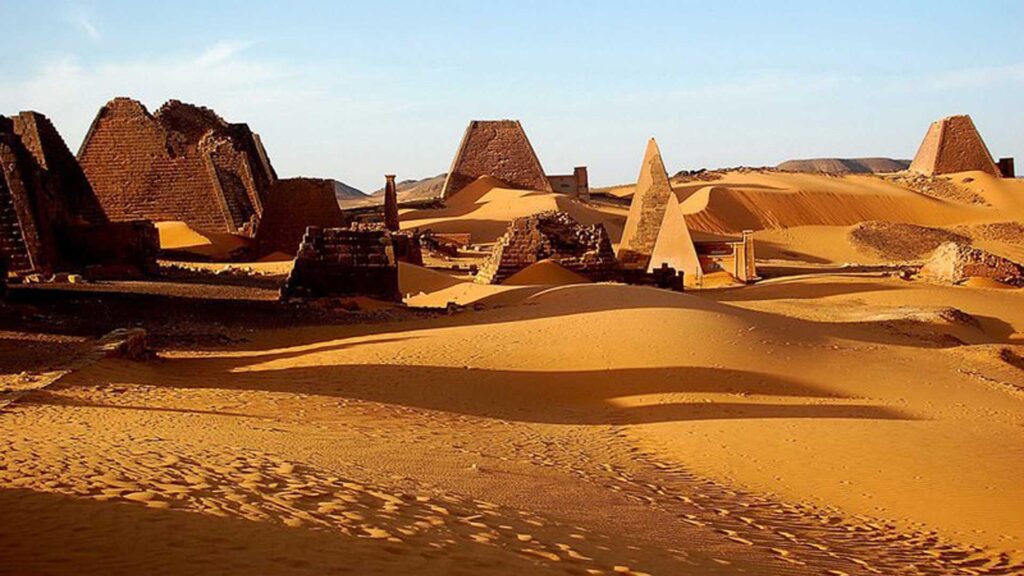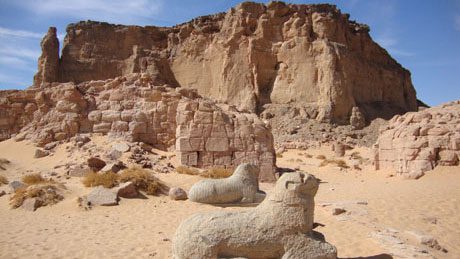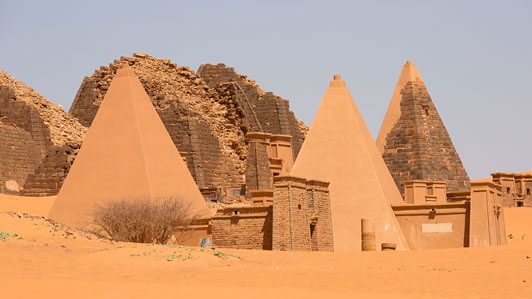Kingdom of KUSH
Since 1069 BC, the Kushite Kings and Queens were able to reign without fear or influence until modern times. Its “Terraria Nulius” status was confirmed due to discrepancies in border definitions by neighboring nations, and has never been colonized by non-Africans.
The nature of the political regime functioned as a constitutional monarch, with the monarch being male or female depending on the historical periods, and a democratically elected and functional government.
Geographical indications of the location, population, and characteristics of a state are related to the Kingdom of Kush. This includes the economy, science, agricultural technology, water management, and renewable energy industries. The cultural heritage that once thrived will be reconstructed and managed to meet the twenty-first century needs of interested parties from the African diaspora.
Kush States
Origins
The Kerma culture was an early civilization centered in Kerma, Sudan. It flourished from around 2500 BC to 1500 BC in ancient Nubia. The Kerma culture was based in the southern part of Nubia, or “Upper Nubia” (in parts of present-day northern and central Sudan), and later extended its reach northward into Lower Nubia and the border of Egypt.


Nubians
Mentuhotep II, the 21st century BC founder of the Middle Kingdom, is recorded to have undertaken campaigns against Kush in the 29th and 31st years of his reign. This is the earliest Egyptian reference to Kush; the Nubian region had gone by other names in the Old Kingdom. Under Thutmose I, Egypt made several campaigns south.


Napatan
By the 8th century BC, the new Kushite kingdom emerged from the Napata region of the upper Dongola Reach. The first Napatan king, Alara founded the Napatan, or 25th, Kushite dynasty at Napata in Nubia, now Sudan. Alara dedicated his sister to the cult of Amun at the rebuilt Kawa temple, while temples were also rebuilt at Barkal and Kerma.


Meroitic
Kushite civilization continued for several centuries. According to Welsby, “throughout the Saite, Persian, Ptolemaic, and Roman periods, the Kushite rulers—the descendants of the XXVth Dynasty pharaohs, and the guardians of the Temple of Amun at Jebel Barkal—could have pressed their ‘legitimate’ claim for control of Egypt and they thus posed a potential threat to the rulers of Egypt.


Ptolemaic
There is no record of conflict between the Kushites and Ptolemies. However, there was a serious revolt at the end of Ptolemy IV, around 204 BC, and the Kushites likely tried to interfere in Ptolemaic affairs. It has been suggested that this led to Ptolemy V defacing the name of Arqamani on inscriptions at Philae.




